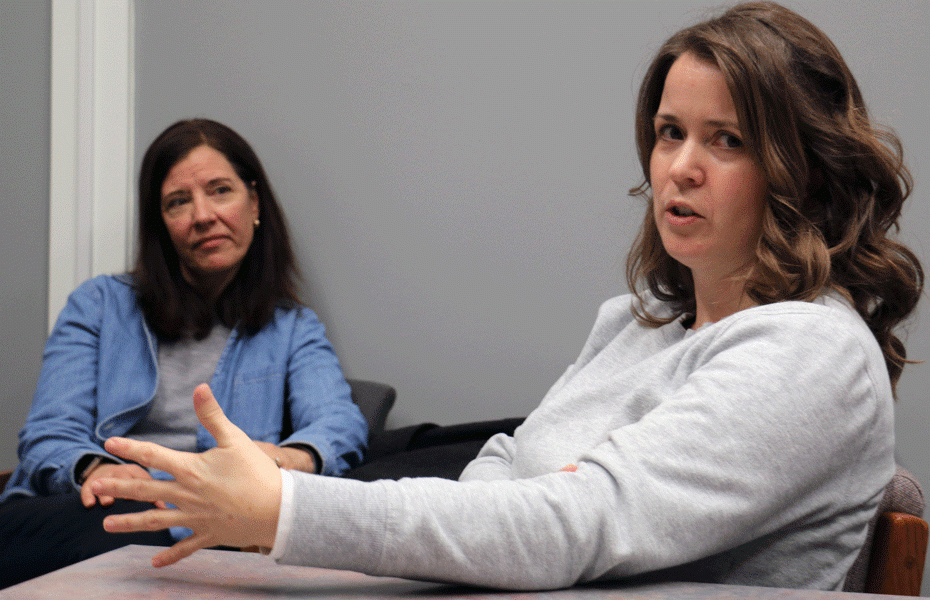VALE – Widespread use of social media platforms is impacting how educators and administrators teach across Malheur County, creating new challenges for youth where the long-term consequences are ill-defined and troubling.
The scenario is disturbing enough elsewhere that in January the Seattle School District sued several large tech companies, asserting social media created a mental health crisis among youth.
The lawsuit named TikTok, Instagram, Facebook, YouTube and Snapchat and faults them for deteriorating mental health and behavioral issues among students that include anxiety, depression, bullying and eating disorders.
The Kent School District has also joined the lawsuit in U.S. District Court.
“Our students – like young people everywhere – face unprecedented, learning and life struggles that are amplified by the negative impacts of increased screen time, unfiltered content, and potentially addictive properties of social media,” Brent Jones, superintendent of Seattle Public Schools, said in a written statement.
The Seattle school system wants the tech companies to “fund prevention education and treatment for excessive and problematic use of social media.”
Social media use by students is also a challenge for school officials in Malheur County and often creates unique problems.
The digital platforms spawn bullying, mental health and self-esteem issues and behavioral problems, according to several county education officials. Social media use also produces a distinctive new way for youth to categorize others, said Andrea Buchholz, Alameda Elementary School principal in Ontario.
“Kids use it as a tool to exclude or include others,” said Buchholz.
Social media use is widespread among students and so are the problems it creates, said Jennifer Goldthorpe, a school counselor.
Goldthorpe said she fields more mental health referrals now than at any other time in her career.
She said there is an upswing in social anxiety – especially in girls.
“Our schools are in crisis,” said Goldthorpe.
While bullying has always been a challenge for schools, social media offered new avenues to harass others, said Mark Redmond, superintendent of the Malheur Education Service District.
“Social media, Facebook, Snapchat, all that kind of stuff amplifies the ability of students to bully each other,” said Redmond.
Buchholz said she’s also noted the increase of bullying connected to social media use.
“We’ve also seen the deterioration of relationships. It is so easy to say stuff when you are behind a keyboard and not face-to-face with someone,” said Buchholz.
Buchholz said her school does not allow cell phones when students are in class. Yet, she said, youth find ways around the rule. Students, she said, are addicted to their phones and the social media platforms they can access.
“You wouldn’t believe the lengths kids go to keep the phone during the day,” said Buchholz.
One danger of social media, said Goldthorpe, is it portrays a “false image.”
“They (students) compare themselves to this false reality that is based on a perception of social acceptance,” said Goldthorpe.
Everyone is “going to post their best life on social media,” Buchholz said. “You won’t see what really goes on behind closed doors.”
Students are “constantly comparing themselves to what everyone else is doing,” she said.
Search rhythms on social media also play a potentially negative role for youth, said Goldthorpe.
“What you see is what you search for. So, if you search ‘self-harm’ you will see more based on that search. That information isn’t vetted and it can be dangerous for a student in a (mental health) crisis,” said Goldthorpe.
Jennifer Susuki, the student wellness coordinator for the Malheur Education Service District, said social media use results in mental health issues with some students.
“A lot of us get on social media because it helps us feel less alone but it actually creates situations that are the opposite. Connection is so important for mental health but social media isn’t really a real connection,” said Susuki.
Social media’s addictive qualities are another worry, said Susuki.
“We have kids addicted to it. It is like a slot machine. Where you scroll and you get reinforced by some message, it gives you a dopamine surge. You get a neurological high from it,” said Susuki.
Susuki, agreed with Goldthorpe schools face a crisis with social media use.
“We have kids who are not being safe online and it puts them in a position to be a target for human trafficking. The other thing it interferes with, is sleep and kids are not getting enough sleep. Sleep affects everything, mental and physical health and their academics,” said Susuki.
According to the nonprofit The Mayo Clinic studies show links between high social media use and depression or anxiety. A 2016 study of more than 450 students discovered more intensive use of social media was connected to sleep quality and boosted levels of anxiety and depression.
Social media use has separated, rather than united, youth, said Susuki.
“They (students) are not getting together as often. Instead of playing a video game next to each other, they play a video game online and talk to each other on headphones,” said Susuki.
The Covid pandemic didn’t help with negative social media impacts, said Susuki.
“I think kids didn’t have a chance to interact face-to-face and so they lost skills, especially kids transitioning into different schools,” said Susuki.
Chasing answers
Goldthorpe and Susuki, said they don’t oppose social media use and concede there is no way to stop youth from participating on digital platforms.
“I think social media is fantastic in a lot of ways because you can keep up with what people are doing,” said Buchholz.
Buchholz said there are “really good, powerful things that social media does.”
“But with these young groups, they just don’t have the skills to navigate it,” said Buchholz.
The educators said parents can be an influence, lessening the impact of social media.
“When parents are not involved, kids can’t deal with that emotion of missing out on a birthday party. Instead, their self-esteem goes down,” said Buchholz.
Suzuki said parents should be “really aware of what their kids are on.”
“I can tell you I wasn’t aware as a parent. I think we should limit how much time kids spend on it,” said Susuki.
Goldthorpe said another important tip for parents is to make sure their children’s social media accounts are private and agreed with Suzuki that time restrictions are crucial.
Extra-curricular activities – such as sports and clubs – provide an antidote for the impacts of social media use, said Susuki.
Goldthorpe the social media problem is “so big it has to be a community discussion.”
“As a community we need to step up,” said Goldthorpe.
That means, she said, the community rallying behind its children.
“Volunteering our time, money and creativity to develop healthy activities for our youth will be imperative to combating the negative effects of social media,” said Goldthorpe.
News tip? Contact reporter Pat Caldwell at [email protected]
HOW TO SUBSCRIBE – The Malheur Enterprise delivers quality local journalism – fair and accurate. You can read it any hour, any day with a digital subscription. Read it on your phone, your Tablet, your home computer. Click subscribe – $7.50 a month.




